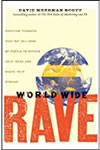All Articles
Alternative Dispute Resolution (ADR)
Forensic Analysis
Anger Management & Related Issues
Forensics
Appraisal & Valuation
Gems & Jewelry
Aquatics Safety
Hotels & Hospitality
Archaeology - Archeology
Hydrology
Artificial Intelligence (AI) / Machine Learning (ML)
Internet Marketing
Attorney Fees
Jails - Prisons - Correctional Facilities
Banking
Land Mapping - Surveying - Zoning
Business Consulting
Manufacturing
Business Management
Marketing
Chemical Industry
Medical Records Review
Communication
Meditation
Criminology
Nonprofit Organizations
Crisis Management
Pharmaceuticals
Dental - Dentistry
Physician Assistants
DNA (Deoxyribonucleic Acid)
Pools and Spas (Recreational)
Documentation Examination & Analysis
Professional Skills
Domestic Violence
Radiology
Economics
Risk Management
Education & Schools
Security
Employment
Sexual Abuse - Molestation - Harassment
Energy - Utilities
Slip, Trip & Fall
Environment
Telecommunication
Ethics / Ethical Duties
Terrorism - Homeland Security
Eyewitness Testimony
Yoga
More...

AQUATICS-SAFETY-PAGE ARTICLES MAIN PAGE
. Contact Us if you are interested in having your work published on our website and linked to your Profile(s).
All Articles
Accident Investigation & Reconstruction
Intellectual Property
Accident Prevention & Safety
Internet Marketing
Alternative Dispute Resolution (ADR)
Laws & Procedures
Appraisal & Valuation
Machinery
Aquatics Safety
Manufacturing
Archaeology - Archeology
Market Research
Architecture
Meditation
Bacteria - Fungus - Mold Investigation
Mining
Blockchain Information
Nursing
Boating
Oil & Gas
Child Welfare
Orthotics and Prosthetics
Computer Forensics
Pharmaceuticals
Computers
Physician Assistants
Construction
Public Speaking
Crime Scene Investigation
Real Estate
Design
Search Engine Optimization (SEO)
DNA (Deoxyribonucleic Acid)
Securities
Domestic Violence
Slip, Trip & Fall
Education & Schools
Speech-Language Pathology
Elder Abuse
Spirituality
Engines (Combustion - Diesel)
Taxation
Family Issues
Terrorism - Homeland Security
Foot / Ankle Surgery
Underwriting
Healthcare
Warnings & Labels
Human Factors
Yoga
More...
Featured Articles
There are no active articles here at this time. Please use the search bar, try another category, or contact us if you would like to contribute an article.
This Article is unavailable. Contact Us
Search articles by title, description, author etc.
Sort Featured Articles
Featured resources
Get Your Construction Business To...
by George Hedley
Deregulatory Takings and the...
by J. Gregory Sidak
World Wide Rave: Creating Triggers...
by David Meerman Scott
Follow us










